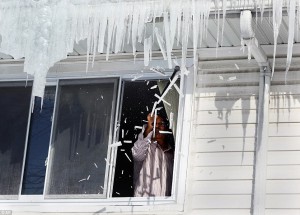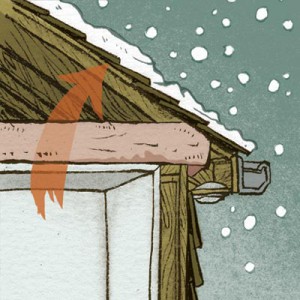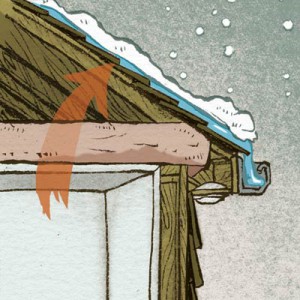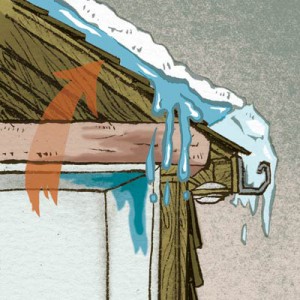Snowfall can be both exciting and inconvenient in the Upstate New York region at this time of year. Underneath a heavy blanket of fresh snow and adorned with twinkling icicles, your home can appear more magical and wondrous. On the other hand, the accumulation of ice and snow on top of a home can spell disaster.

The conditions that allow picturesque icicles to form on the edges of your roof also promote the growth of ice dams, or thick slabs of frozen solid ice that build up on your roofline. Heavy, sharp, and frigid, ice dams can tear down your drainpipes, leak into your drywall, or loosen your shingles. Homeowners can protect their properties from ice damming through vigilant roof care and prevention.
How are Ice Dams Formed?The life of an ice dam begins when the roof above your attic becomes hotter than 32 degrees Fahrenheit, which is warm enough to melt the under layer of snow. This heating is usually the result of faulty ventilation that is driving too much of your home’s heat to the attic. Because snow is an incredibly effective insulator, the heat emanating from your roof remains trapped beneath the thick layer of snow. It slowly melts the snow layer by layer, and the water runs down the warm surface until it reaches your roof's edge. Once the water is free from that trapped heat, however, it quickly refreezes. This cycle of melting and refreezing continues until the snow is gone and a tall sheet of ice is in its place.
It is not unusual for ice dams to become worse after replacing the windows and doors in your home. Now that the heat in your home no longer escapes through old windows or doors, it can leak through an inadequately insulated and ventilated attic. How are Ice Dams Removed?
How are Ice Dams Removed? When you see that an ice dam has formed on your roof, do not grab a hammer or chisel. Picking away at the ice with tools can result in loosening the entire ice slab at once, which is potentially dangerous for you and your home. Throwing rock salt on the ice dam can also damage the paint, metals, and plants nearby where the melted ice would drain. For immediate removal, specialists suggest that you use a calcium chloride ice melt to gradually degrade the ice dam. Once it is softened or broken up, you can carefully begin raking chunks off your roof.
How are Ice Dams Prevented?The key to ice dam prevention lies in your attic, not on the roof. After all, it is an insulation malfunction that leads to the buildup of ice in the first place. Seal all leaks in your attic, especially those beneath the roof sheathing. Insulate your home in order to prevent the circulation of heat into your attic, and install added ventilation so any heat that gathers in your attic is immediately dispersed. Homeowners can also rake snow off the roof and out of gutters before it has a chance to refreeze.
Tags
Subscribe to the Comfort Windows & Doors Blog











Comments